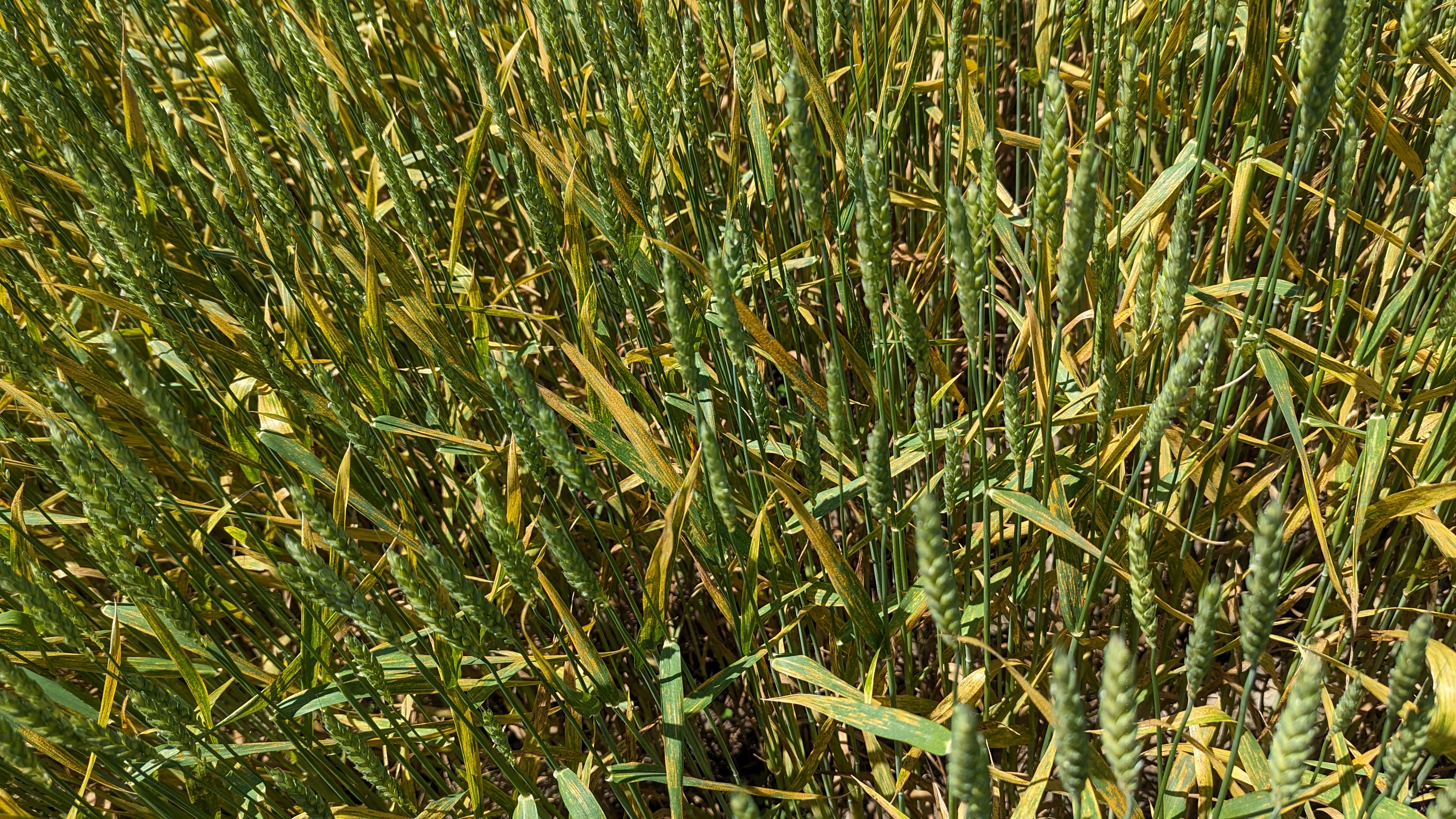Wheat watchers week of June 3, 2024
See how the wheat crop is progressing across the state this week.

This will be the last report weekly report and we will switch to bi-weekly going forward. This report is only possible because of our agribusiness and farmers who participate as wheat watchers. If you are interested in being a wheat watcher, especially if you see your area isn’t represented, please reach out to Michigan State University Extension field crops educator Jenna Falor at falorjen@msu.edu.
Overall, this week reporters are seeing wheat stands in good condition ranging in Feekes growth stage 10.5.3 – 11.2 across the state.
Southwest region
We had two wheat watchers reporting from southwest region: one from Barry County near Hickory Corners and one from St. Joseph County near Centreville. Wheat is reported to be at Feekes 10.5.3 – 11.2, which means the flowering is complete at some of the least mature fields and the more advanced fields are at a soft dough stage. The watcher in St. Joseph County is reporting increased powdery mildew with the recent low but consistent moisture.
If you are interested in receiving southwest Michigan crop updates, Michigan State University (MSU) Extension field crops educator Nicolle Ritchie puts out a weekly update through MSU Extension Field Crops News.

Southeast region
We had one wheat watcher reporting from Jackson County. Wheat is at a Feekes 11.1, which is when the wheat is at the milk stage. There have been some reports of lodging in the area.
East central (Thumb) region
We had one wheat watcher reporting from the Thumb region. They scouted fields in Huron and Tuscola counties. Wheat is at Feekes 10.5.4, which means wheat has completed flowering and the kernel will have a clear fluid when squeezed. There is some cereal leaf beetle pressure in Tuscola County, but nothing at the threshold level.
Central region
We had three wheat watchers reporting from the central region: one in Ingham County near Mason, one in Saginaw County near Richville and one in Montcalm County near Trufant. Wheat is at Feekes 10.5.3 – 11.1 across the region. The watcher near Mason is reporting Feekes 10.5.4 – 10.5.4, the watcher near Richville is reporting Feekes 10.5.4 – 11.1 and the watcher near Trufant is reporting Feekes 10.5.3 – 10.5.4. There has been plenty of rainfall across the area and wheat stands are generally looking good. There is a concern about strong storms potentially causing issues for some growers such as lodging.
If you are interested in viewing the central Michigan crop updates, MSU Extension field crops educator Monica Jean puts out a weekly, live update through the MSU Extension Field Crops Facebook page.

West central region
We had no wheat watchers reporting from west central this week.
North region
We had no wheat watchers reporting from the northern area this week.
Notes from Dennis Pennington and Marty Chilvers
Marty Chilvers, a Michigan State University field crops plant pathologist, is reporting that stripe rust has impacted numerous fields across the state. Applications at flowering will provide some protection of the non-infected leaf tissue. If you know of stripe rust in a county that is not on the following map, please let him know at chilvers@msu.edu. Head scab risk remains low across the majority of Michigan.
Dennis Pennington, a Michigan State University wheat systems specialist, is reporting that most areas have had adequate rainfall for wheat. Low overnight and daytime temperatures during the flowering period will lead to improved fertilization and reduce the abortion of flowers. The warm winter and early spring has lead to an advanced development of the crop. We are 10 days to two weeks earlier in crop development compared to last year. This means harvest will occur earlier. Make sure your equipment is ready to go. Pennington believes harvest will start in the southern part of the state the last week of June.
Pennington is also reporting that cereal leaf beetle populations have been high in some areas. Growers should continue to scout. The threshold at this stage is one larva per flag leaf. He also reports that stripe rust still remains in some fields, even after T3 fungicides have been applied. Infections are worse on susceptible varieties and two adjacent fields could be very different in infection level because of this. At this point though, nearly all of Michigan is beyond the stage where an additional fungicide pass can be made. The preharvest interval for all wheat fungicides is 30 – 45 days.



 Print
Print Email
Email




